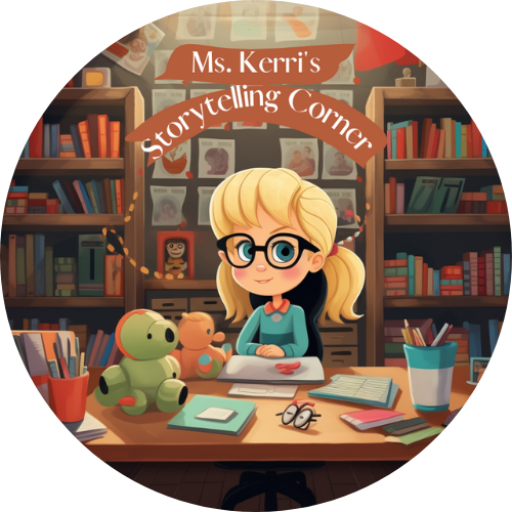
Understanding Early Math Concepts: A Guide for Preschool and Kindergarten Teachers
Understanding Early Math Concepts: A Guide for Preschool and Kindergarten Teachers is a comprehensive resource designed to support educators in fostering a strong foundation in mathematics for young learners. Early math education is crucial as it lays the groundwork for future mathematical understanding and success. This guide will explore various key areas of early math education, providing teachers with practical strategies, activities, and approaches to engage and support preschool and kindergarten students in developing critical math skills. From building number sense and counting skills to introducing measurement and problem-solving, this article aims to equip teachers with the knowledge and tools necessary to create a rich math learning environment for their young students.
1. Introduction to Math Education
1.1 Importance of Early Math Education
Let’s face it, math can be intimidating for many people. But it doesn’t have to be! In fact, introducing math concepts to young children at an early age can help them develop a strong foundation for future learning. Early math education is important because it lays the groundwork for critical thinking, problem-solving, and logical reasoning skills.
When children engage with math from a young age, they become comfortable with numbers and develop a positive attitude towards math. This can greatly benefit them as they progress through their education and encounter more complex math concepts.

1.2 Goals and Objectives of Early Math Education
The goals and objectives of early math education are not about turning preschoolers into mathematicians overnight. Instead, they focus on building a solid understanding of fundamental concepts that will support later mathematical learning.
In the early years, the main objectives of math education are to develop number sense, counting skills, shape recognition, and basic measurement skills. By achieving these objectives, children will be equipped with the necessary foundation to tackle more advanced mathematical concepts as they continue their education.
2. Building Number Sense and Counting Skills
2.1 Counting Activities and Rhymes
Counting is the bread and butter of early math education. It’s the gateway to understanding numbers and quantities. Engaging children in counting activities and rhymes can make learning numbers fun and interactive. Sing counting songs or use hands-on materials like blocks or counting beads to help children grasp the concept of counting.
2.2 Recognizing and Representing Numbers
Once children have a good grasp of counting, the next step is to recognize and represent numbers. Start by introducing numerals and associating them with their corresponding quantities. Use visual aids like number cards or manipulatives to help children visualize the concept of numbers.
2.3 Introducing Basic Operations
As children become more comfortable with numbers, it’s time to introduce basic operations like addition and subtraction. Keep it simple and relatable by using everyday objects. For example, ask children to count how many apples are on the table and then take away a few. This helps them understand the concept of subtraction in a practical way.
3. Exploring Shapes and Spatial Awareness

3.1 Identifying and Naming Shapes
Shapes are all around us, and helping children identify and name them is an important early math skill. Point out shapes in the environment and encourage children to do the same. Play shape recognition games and use hands-on materials like shape puzzles to make learning about shapes engaging and interactive.
3.2 Understanding Spatial Relationships
Spatial awareness is another crucial aspect of early math education. It involves understanding concepts like up and down, in front of and behind, and left and right. Engage children in activities that require them to navigate and describe their surroundings, like arranging objects or playing with a map. This helps develop their spatial reasoning abilities.
3.3 Sorting and Classifying Objects
Sorting and classifying objects is a great way to introduce children to basic math concepts like patterns and relationships. Provide children with a variety of objects and ask them to sort them based on different attributes, like color or shape. This helps develop critical thinking and categorization skills.
4. Introducing Measurement and Comparisons
4.1 Understanding Size and Length
Measurement skills are important for everyday life, and introducing the concept of size and length can be a fun learning experience. Help children compare objects based on their size and length. Use non-standard units of measurement, like paper clips or building blocks, to explore the concept of measurement in a hands-on way.
4.2 Exploring Weight and Capacity
In addition to size and length, children should also be introduced to the concepts of weight and capacity. Provide opportunities for children to compare the weight of different objects or explore the capacity of containers by filling them with various amounts of liquid or objects. This helps develop their understanding of measurement in different contexts.
4.3 Comparing and Ordering Objects
Comparing and ordering objects is a fundamental math skill that can be introduced through various activities. Have children line up objects from smallest to largest or order a set of objects based on a specific attribute, like color or shape. This helps children understand the concept of order and develop their ability to compare and analyze different objects.
Remember, early math education is about fostering a positive attitude towards math and building a strong foundation. So, have fun, be creative, and embrace the world of math with your young learners!
5. Developing Problem Solving and Critical Thinking Skills

5.1 Solving Math Problems through Hands-on Activities
Math problems can be daunting for young learners, but by incorporating hands-on activities, teachers can make problem-solving a fun and engaging experience. For example, using manipulatives like blocks or counting beads can help children visualize and understand abstract concepts. Encourage students to solve problems by actively manipulating objects and experimenting with different strategies. Remember, the journey is just as important as the solution!
5.2 Encouraging Logical Reasoning and Deductive Thinking
Logical reasoning and deductive thinking are essential skills for mathematical success. Teachers can foster these skills by presenting students with puzzles or brain teasers that require logical reasoning to solve. Encourage children to explain their thinking and provide opportunities for them to justify their solutions. This will help develop their ability to think critically and make logical connections in mathematical situations.
5.3 Enhancing Problem-Solving Strategies
Problem-solving is not just about finding an answer; it’s about developing a repertoire of problem-solving strategies. Teach students various problem-solving techniques, such as drawing pictures, making a list or table, looking for patterns, and breaking a problem into smaller parts. By expanding their problem-solving toolkit, students will become more confident and adaptable when faced with mathematical challenges.
6. Incorporating Math into Daily Activities and Play
6.1 Math in Everyday Life
Math is everywhere, and incorporating it into daily activities helps children understand its practical applications. Encourage students to count and sort objects during cleanup time, measure ingredients while cooking, or estimate distances while playing outside. By showing how math relates to their everyday experiences, children will develop a deeper understanding and appreciation for its relevance in their lives.
6.2 Games and Activities for Math Learning
Learning math doesn’t have to be all work and no play! Introduce games and activities that make math enjoyable. Board games like “Snakes and Ladders” can reinforce number recognition and counting skills, while card games like “War” or “Go Fish” can help with comparing and ordering numbers. Incorporate math-themed puzzles, riddles, or scavenger hunts to keep the learning process exciting and interactive.
6.3 Using Manipulatives for Hands-on Learning
Manipulatives are a valuable tool for hands-on learning in math. From counting cubes to shape blocks, manipulatives provide a concrete representation of abstract concepts. Give students the opportunity to explore and manipulate these objects, allowing them to build a strong foundation in mathematical understanding. Whether it’s building shapes or measuring with rulers, manipulatives make math come alive in a tangible way.
7. Strategies for Engaging and Supporting Young Learners

7.1 Creating a Positive Math Learning Environment
Creating a positive math learning environment is crucial for engaging young learners. Foster a classroom atmosphere where mistakes are seen as learning opportunities, and students feel comfortable asking questions. Use positive reinforcement and praise students’ efforts to build their confidence and motivation. By nurturing a supportive environment, you can help children develop a positive mindset towards math.
7.2 Differentiated Instruction for Diverse Learners
In a diverse classroom, it’s essential to differentiate instruction to meet the needs of all learners. Provide various levels of difficulty or different tasks to cater to different abilities. Use visual aids, manipulatives, and technology to accommodate different learning styles. By tailoring instruction to individual students, you can ensure that everyone feels included and challenged in their mathematical journey.
7.3 Incorporating Technology in Math Education
Technology offers exciting opportunities to enhance math education. Explore educational apps, online games, or interactive websites that provide engaging math activities. Use interactive whiteboards or tablets to facilitate demonstrations or virtual manipulatives. By incorporating technology, you can make math more interactive and provide students with a multi-sensory learning experience.
8. Collaboration with Parents and Caregivers for Math Reinforcement

8.1 Communicating the Importance of Math to Parents
Collaboration with parents and caregivers is vital for reinforcing math skills outside the classroom. Communicate the importance of math and its impact on their child’s overall academic success. Provide resources that explain math concepts in parent-friendly language and offer suggestions for incorporating math into everyday activities at home. By involving parents, you can create a supportive network that encourages math learning beyond school hours.
8.2 Providing Resources and Activities for Home Reinforcement
Give parents and caregivers resources and activities they can use at home to reinforce math skills. Create simple math games, provide worksheets, or recommend educational websites or apps that align with what is being taught in class. These resources can empower parents to support their child’s math learning journey and strengthen the connection between home and school.
8.3 Engaging Parents in Math Learning Opportunities
Invite parents to participate in math learning opportunities. Organize math-themed family events or workshops where parents and children can engage in hands-on activities together. Encourage parents to share their own math-related experiences or cultural practices that involve math. By involving parents directly, you foster a sense of collaboration and shared responsibility for their child’s mathematical development.
In conclusion, developing a strong understanding of early math concepts is essential for preschool and kindergarten students. By incorporating engaging activities, hands-on learning experiences, and fostering a positive math learning environment, teachers can lay a solid foundation for future mathematical success. Remember to collaborate with parents and caregivers, utilize technology, and continuously adapt instruction to meet the diverse needs of young learners. With the knowledge and strategies provided in this guide, teachers can confidently navigate the world of early math education and inspire a lifelong love for mathematics in their students.
FAQ
1. Why is early math education important?
Early math education is crucial as it provides a strong foundation for future mathematical understanding. It helps children develop critical thinking, problem-solving, and logical reasoning skills. Early math skills also support success in other academic areas and promote overall cognitive development.
2. How can I incorporate math into daily activities and play?
Integrating math into daily activities and play can be fun and easy. You can count objects during snack time, play sorting games with toys, or create shapes with playdough. By using manipulatives and making math a part of everyday experiences, you can help children see the practical applications of math in their daily lives.
3. How can I engage parents and caregivers in supporting math learning at home?
Effective collaboration with parents and caregivers is key to reinforcing math skills outside of the classroom. Share resources, such as math-related books or online activities, with parents. Provide them with suggestions for incorporating math into daily routines, such as counting while cooking or measuring during arts and crafts. Regular communication and involving parents in math-related events can also foster a supportive home environment for math learning.
4. What are some strategies for supporting diverse learners in early math education?
When working with diverse learners, it is important to offer differentiated instruction. Provide a variety of hands-on materials and activities to accommodate different learning styles. Use visual aids, manipulatives, and real-world examples to reinforce concepts. Additionally, offer one-on-one or small group instruction to provide individualized support and address specific needs.


Ms. Kerri’s Corner provides a exciting virtual space for preschool learning. Through a variety of engaging activities, she exposes young minds to early math, literacy, science and social-emotional skills in a developmentally appropriate way. Centers for blocks, art, books and music allow children to explore hands-on learning at their own pace. Guided lessons subtly introduce number sense, letter sounds and narrative thinking. Careful observation gives insight into each child’s progress across domains. Viewers are also invited to participate, reinforcing that their ideas are valued. By making learning fun yet purposeful, Ms. Kerri lays the groundwork for future academic success while fostering creativity and imagination. Her program offers preschoolers valuable screen-based learning experiences.




